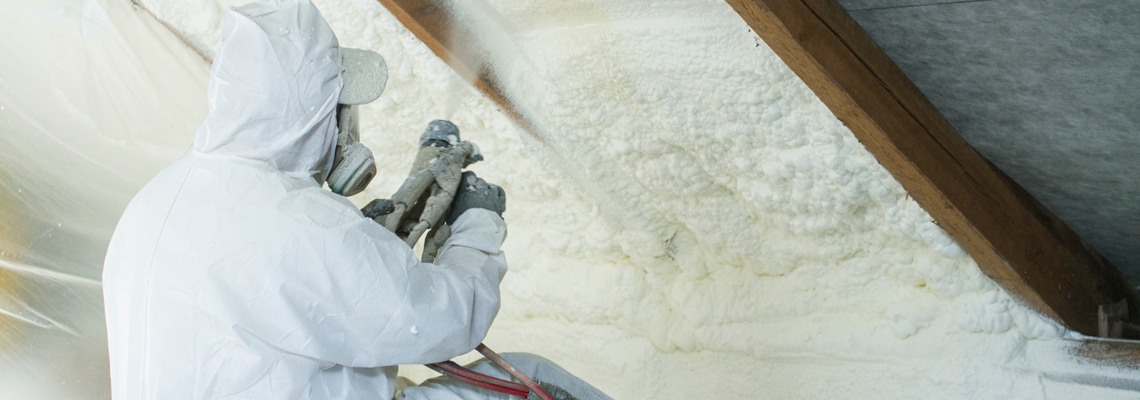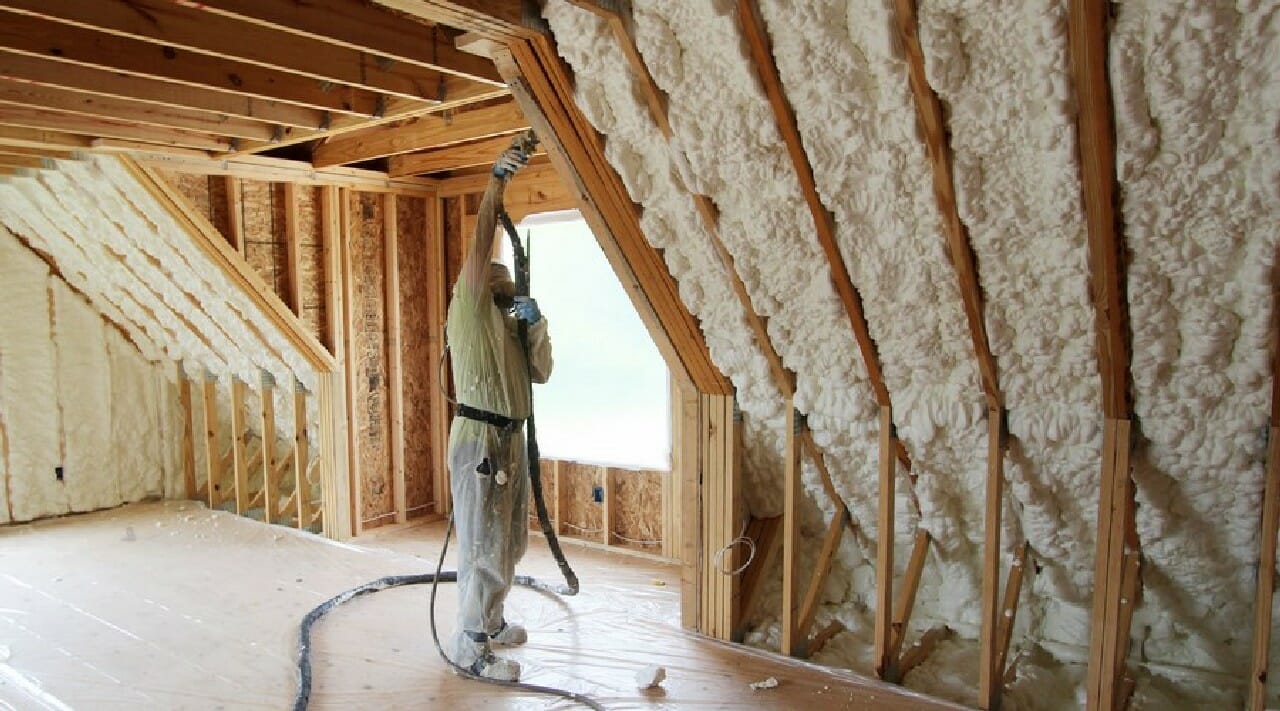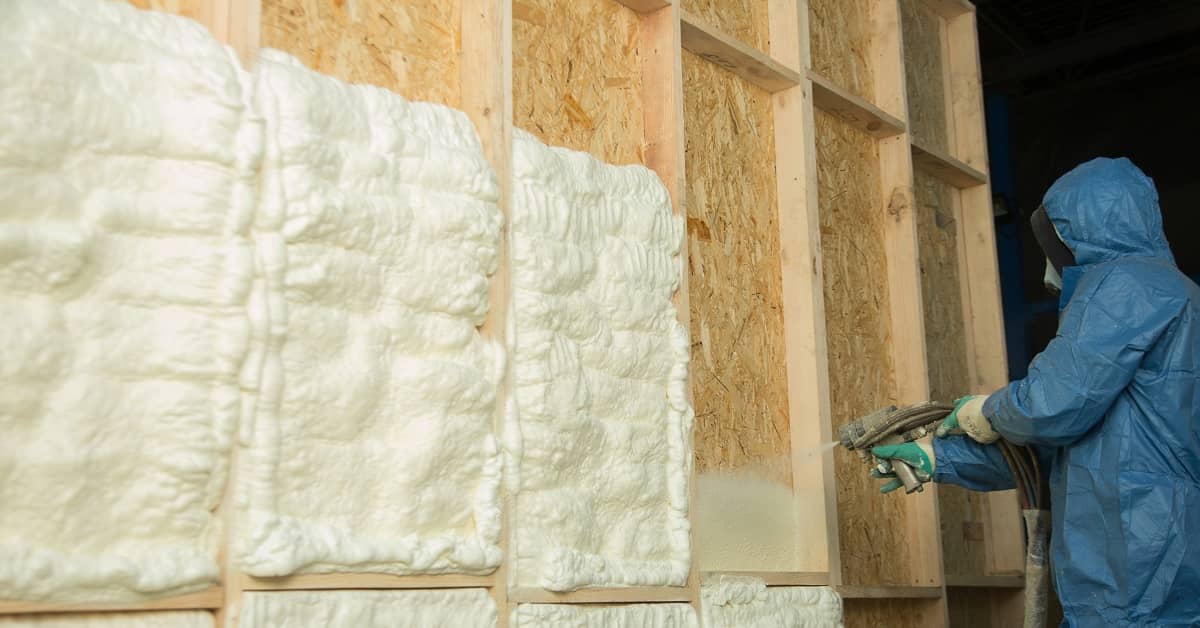Open-cell spray foam insulation is widely known for its thermal performance, but its acoustic benefits are just as relevant—especially for property owners looking to reduce indoor noise. Whether it’s street traffic, machine vibrations, or conversations between rooms, managing sound transfer is key to improving both comfort and privacy in residential and commercial spaces. This article explains how an expert open-cell spray foam insulation service helps dampen sound, how it compares with other methods, and where it performs best.
How Open-Cell Spray Foam Reduces Sound Transmission
Open-cell spray foam helps control airborne sound by absorbing acoustic energy instead of allowing it to travel through walls, ceilings, or floors. Its porous, low-density structure disrupts sound waves, making it an effective solution for noise control in both homes and commercial environments.
What Makes Open-Cell Foam Good for Acoustic Insulation
The material’s cellular composition is designed to trap air within its structure. These tiny, open pockets disrupt the path of sound waves, reducing their intensity and clarity as they pass through.
- The foam doesn’t block sound entirely but significantly reduces echo, vibration, and airborne noise.
- Open-cell foam has a typical density of 0.5 lb/ft³, allowing more flexibility and better vibration absorption than closed-cell alternatives.
- With an STC (Sound Transmission Class) rating that can exceed 37 when used in interior walls, it meets the sound-reduction needs of most residential and office spaces.
How Sound Travels and How Foam Interferes
Sound moves in waves, and when it encounters materials, part of the energy is reflected, absorbed, or transmitted. Open-cell foam works by increasing the absorption rate and reducing reflection.
- In walls and ceilings, it softens and traps noise from footsteps, HVAC systems, and conversations.
- For media rooms or shared living spaces, it lowers noise transfer between rooms.
Comparing Open-Cell Foam with Other Soundproofing Materials
Each soundproofing material has its strength, but open-cell spray foam offers a balance between effectiveness, ease of application, and energy efficiency.
| Material | Sound Absorption Performance | Thermal Insulation | Installation Complexity | Cost-Efficiency |
|---|---|---|---|---|
| Open-Cell Spray Foam | High for airborne noise | Moderate | Moderate | High |
| Closed-Cell Spray Foam | Low to Moderate | High | More complex | Moderate |
| Fiberglass Batts | Moderate | Low to Moderate | Easy | High |
| Rockwool (Mineral Wool) | High | Moderate | Easy | Moderate |
| Mass Loaded Vinyl (MLV) | Very High (for impact noise) | None | High | Low |
Why Choose Open-Cell for Both Thermal and Acoustic Use
Open-cell spray foam allows property owners to insulate for temperature control and improve acoustic privacy using one material. This dual-function approach reduces the need for additional layers like soundboards or acoustic tiles.
Where Open-Cell Foam Performs Best in Reducing Noise
The effectiveness of sound dampening depends on the location, structure type, and noise source. Open-cell foam works best when applied in specific zones that transfer the most noise.
Interior Wall Cavities
Most residential and light commercial properties have hollow wall cavities that allow sound to travel. Injecting or spraying open-cell foam into these cavities can block typical sources like conversations, electronics, and appliance hum.
Floor Joists and Between Levels
Noise from foot traffic, dropped items, or moving furniture can move through floors. Filling the joist cavities with foam dampens this by limiting resonance and echo.
Ceilings Under Roof Decks or Attics
In buildings located near busy streets or under flight paths, airborne noise enters through the roof. Foam sprayed under the deck acts as a barrier that both insulates and reduces the sound energy passing through.
HVAC and Utility Chase Areas
Ducts and chases act as echo chambers that transfer noise across rooms or floors. Open-cell foam around these paths absorbs the vibration and helps lower the volume of the transmitted sound.
Does Open-Cell Spray Foam Soundproof Entirely?
Open-cell foam improves sound absorption but does not create a total acoustic seal. Its primary role is dampening airborne noise—not blocking low-frequency or impact sounds.
What It Can Handle
- Voices
- TV or music in nearby rooms
- Small appliances
- HVAC humming
What It Cannot Fully Stop
- Heavy machinery noise
- Bass frequencies
- Vibrations from industrial processes
In those cases, layering foam with additional barriers like MLV or decoupling structures may be needed.
Common Questions About Sound Dampening with Spray Foam
Does open-cell spray foam insulation make a room completely soundproof? No. It reduces airborne sound effectively but doesn’t block low-frequency or structural sounds entirely. For full soundproofing, use it with sound barriers or decoupled wall systems.
Is spray foam better than fiberglass for noise reduction? Yes, for airborne noise. Open-cell foam absorbs sound more effectively than standard fiberglass batts, especially in wall cavities and ceilings.
Can spray foam be used in existing walls for sound control? Yes. Retrofit spray applications allow foam to be injected into existing wall cavities without tearing down drywall, making it suitable for renovations.
How does it compare to acoustic panels or soundboards? Foam absorbs noise within the wall structure, while panels reflect or absorb sound in open space. Foam is more permanent and effective in reducing transmission between rooms.
Will it reduce noise from neighbors in duplex or townhouse walls? It can help reduce voices and mid-range sounds. For complete separation, foam should be combined with denser barriers in shared walls.
Conclusion
Expert spray foam insulation company offers a practical and efficient way to reduce noise transfer in buildings. Its porous structure makes it highly effective at absorbing airborne sounds, especially when used in walls, ceilings, and floor cavities. While not a total soundproofing solution, it improves acoustic comfort and privacy in most residential and commercial spaces.
For property owners balancing energy performance and noise control, open-cell spray foam provides a reliable option that addresses both. Its application in key areas—like shared walls, between floors, or around HVAC systems—can reduce noise complaints and improve quality of life without extensive construction changes.
FAQs
What’s the difference between soundproofing and sound dampening? Soundproofing blocks noise completely, while sound dampening reduces its volume and intensity. Open-cell spray foam is primarily used for dampening.
Can open-cell foam help with echo inside rooms? Yes. It absorbs reflective sound waves, reducing echo and improving speech clarity in open spaces or rooms with hard surfaces.
Is open-cell or closed-cell foam better for acoustic insulation? Open-cell foam is better for absorbing airborne sound. Closed-cell foam is denser and better for moisture resistance but less effective acoustically.
How thick should the foam be for sound reduction? In wall cavities, a 3 to 5-inch application is typical. Thickness should fill the cavity fully for best acoustic performance.
Will foam insulation reduce outdoor noise? It can reduce it significantly when applied to attic ceilings, exterior walls, and around doors or windows—but won’t eliminate it entirely without added barriers.
Reviewer: Jack Parker, a spray foam professional with 7 years of experience, reviewed this post and helped improve sections dealing with brand clarity and customer communication.


